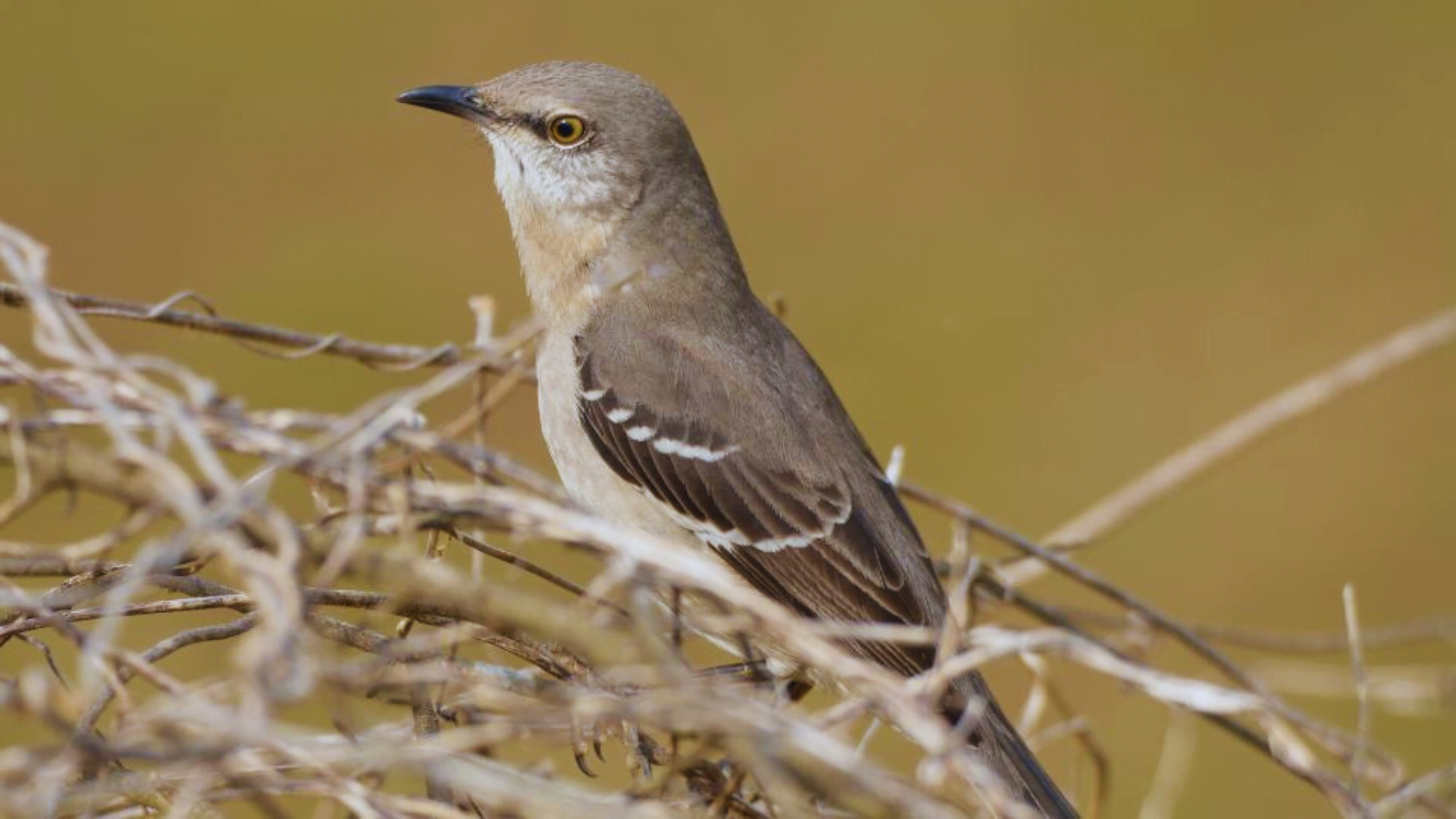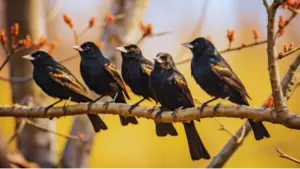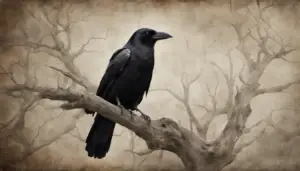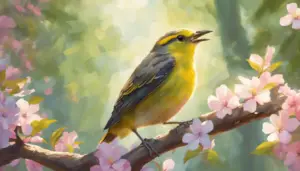Have you ever stopped to listen to the melodious songs of a mockingbird? Picture this: you’re strolling through a park on a sunny afternoon, when suddenly, a familiar tune catches your ear. But wait, it’s not just one song—it’s a medley of melodies, seamlessly transitioning from one to another. The sheer talent of this mimic master has you spellbound.
In this article, we delve into the enchanting world of mockingbird sounds. We’ll explore the history behind their remarkable ability to mimic other birds and even non-avian sounds. From the scientific explanations to the cultural significance, we’ll unravel the secrets behind these symphonies of nature.
But it’s not just about the beauty of their songs. Mockingbird sounds play a crucial role in communication and have fascinated humans for centuries. We’ll also discuss the importance of conserving these incredible species and what the future holds for mockingbird research.
Get ready to be spellbound by the captivating melodies of the mimic master—the mockingbird.
Key Takeaways
- Mockingbirds have the ability to mimic the songs of other birds and even non-avian sounds, thanks to their specialized vocal organ called a syrinx.
- Mockingbird mimicry serves various functions, including attracting mates, establishing territory, communicating with other species, and acting as a defense mechanism.
- Mockingbird sounds have cultural significance and symbolism, being celebrated in folklore and literature as symbols of creativity, adaptability, and the power of mimicry.
- Conservation efforts are crucial for the preservation of mockingbird species and their habitats, as urbanization, habitat loss, and other threats have caused a decline in mockingbird populations.
The History of Mockingbird Mimicry
Get ready to travel back in time and discover the fascinating history of mockingbird mimicry! Imagine yourself in the lush landscapes of North America, where the mockingbird first enchanted listeners with its remarkable ability to imitate the sounds of other birds. These talented songsters have been captivating audiences for centuries.
The story begins in the 18th century when European settlers first encountered the mockingbird. They were astounded by its ability to mimic not only the songs of other birds but also other sounds, such as the barking of a dog or the creaking of a gate. It quickly became a popular pet, with owners training their mockingbirds to perform a repertoire of tunes.
As time went on, scientists began studying these incredible creatures. They discovered that mockingbirds have a specialized vocal organ called a syrinx, which allows them to produce such a wide range of sounds. Through careful observation, researchers found that mockingbirds mimic the songs of other birds to attract mates and establish territory.
Today, mockingbirds continue to serenade us with their symphony of melodies. They have become a beloved symbol of creativity and adaptability. So, next time you hear the melodious song of a mockingbird, take a moment to appreciate the rich history behind its mimicry.
The Reasons Behind Mockingbird Mimicry
Explore the reasons behind why these birds imitate the sounds of other creatures with such precision and accuracy.
Mockingbirds are renowned for their ability to mimic the sounds of other birds, animals, and even man-made noises. This remarkable talent serves several important purposes:
- Communication: By imitating the calls of other birds, mockingbirds can communicate with a wider range of species. This allows them to establish their territory, attract mates, and warn of potential threats.
- Defense: Mimicking the sounds of predators or larger birds can act as a deterrent to potential predators. By tricking them into thinking that a larger, more dangerous creature is nearby, mockingbirds can protect themselves and their nests.
- Attracting Mates: Mockingbirds use their mimicry skills to impress potential mates. By showcasing their wide repertoire of songs, they demonstrate their fitness and genetic superiority, increasing their chances of successfully attracting a mate.
These reasons highlight the adaptability and intelligence of these fascinating birds. The precision and accuracy with which they imitate other sounds is not only a testament to their vocal abilities but also their ability to adapt and survive in a variety of environments.
The Incredible Range of Mockingbird Sounds
Immerse yourself in the astonishing world of melodic diversity as you discover the vast array of vocal expressions that these remarkable birds effortlessly produce. Mockingbirds are truly the masters of mimicry, and their ability to imitate a wide range of sounds is simply astounding.
From the melodious songs of other birds to the chirping of insects and even the sound of car alarms, mockingbirds can reproduce them all with remarkable accuracy.
These incredible birds have the uncanny ability to switch effortlessly between different sounds, creating a symphony of melodies that is truly awe-inspiring. They can mimic the songs of other birds with such precision that it is often difficult to distinguish their imitations from the original. They can also mimic the sounds of their environment, incorporating the calls of other animals and even the sounds of human activity into their repertoire.
Mockingbirds use their vast vocal range for various purposes. They use their mimicry skills to attract mates, defend their territory, and communicate with other birds. They can also use their imitations to deceive predators, creating a false sense of security and distracting them from their nests.
Listening to a mockingbird’s performance is like being transported into a world of enchantment. Each bird has its own unique style and repertoire, making every encounter with these talented mimics a truly special experience.
So next time you hear the melodious symphony of a mockingbird, take a moment to appreciate the incredible range of sounds that they effortlessly produce.
The Science Behind Mockingbird Mimicry
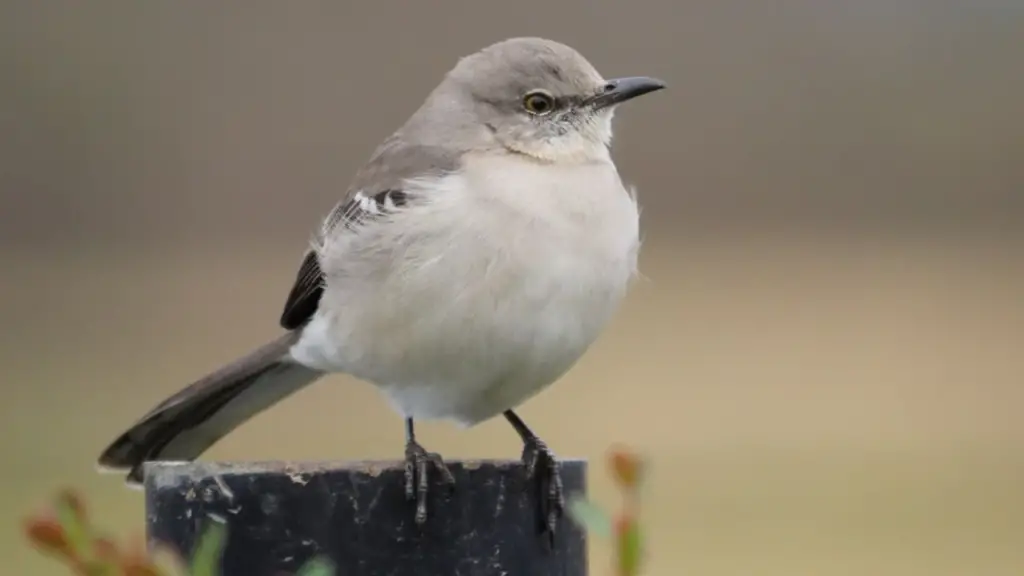
The fascinating phenomenon of mockingbird mimicry is rooted in the scientific study of vocal versatility and auditory acuity. These birds are renowned for their ability to imitate a wide variety of sounds, from other bird species to car alarms and even human voices. But how do they do it?
Mockingbirds have an intricate vocal system that allows them to produce such a diverse range of sounds. They have specialized muscles and vocal folds that enable them to manipulate their voices and create different pitches and tones. Their auditory system is also highly developed, with a large auditory cortex that allows them to accurately perceive and mimic the sounds they hear in their environment.
But mockingbird mimicry is not just about imitating sounds for fun. It serves several important purposes. By mimicking the songs of other bird species, mockingbirds can attract mates and establish their territory. They can also use mimicry as a defense mechanism, confusing predators by imitating the sounds of more dangerous animals.
In conclusion, the science behind mockingbird mimicry is a fascinating field of study. These birds possess incredible vocal versatility and auditory acuity, allowing them to imitate a wide range of sounds. Their mimicry serves important functions in their lives, from attracting mates to defending themselves. So the next time you hear a mockingbird’s symphony of melodies, take a moment to appreciate the scientific marvel behind it.
The Cultural Significance of Mockingbird Sounds
Listen closely to the enchanting medley of notes, as if you were transported to a vibrant cultural gathering, where diverse melodies intertwine and create a harmonious tapestry of sound. The cultural significance of mockingbird sounds is undeniable, as they have been revered and celebrated in various societies throughout history.
- Mockingbird sounds have been featured prominently in folklore and literature, symbolizing creativity, adaptability, and the power of mimicry. These birds are often seen as messengers, bridging the gap between the human and animal realms.
- Mockingbird sounds have also played a role in music and performing arts. Their ability to mimic the songs of other birds and even human sounds has inspired musicians and composers to incorporate their melodies into compositions. Mockingbird sounds add a unique and captivating element to musical performances.
- In some cultures, mockingbird sounds are believed to bring good luck and fortune. Their enchanting melodies are thought to ward off evil spirits and bring about positive energies. Mockingbirds are considered sacred creatures, and their sounds are deeply intertwined with spiritual and cultural rituals.
The cultural significance of mockingbird sounds is a testament to the beauty and power of nature’s symphony. So the next time you hear the melodic tunes of a mockingbird, take a moment to appreciate the rich cultural heritage they represent.
Theories on Mockingbird Mimicry
One can’t help but marvel at the uncanny ability of these feathered virtuosos, effortlessly recreating the diverse voices of nature with astonishing accuracy. Theories on mockingbird mimicry have fascinated scientists and bird enthusiasts for years.
One prevailing theory suggests that mockingbirds mimic other birds’ sounds to attract mates. By showcasing their vocal prowess and ability to imitate various species, they demonstrate their fitness and genetic superiority. This theory is supported by the fact that male mockingbirds tend to have a larger repertoire of songs compared to females.
Another theory proposes that mockingbirds mimic other sounds as a form of defense. By imitating predators or other intimidating sounds, they can scare away potential threats. This ability to deceive and confuse predators gives the mockingbird a distinct advantage in survival.
Additionally, some researchers believe that mockingbirds mimic sounds simply for the joy of it. Like humans, they may derive pleasure from imitating different melodies and experimenting with their vocal abilities. This theory suggests that mockingbirds engage in mimicry as a form of creative expression.
Regardless of the underlying reasons, it is clear that mockingbird mimicry is a remarkable talent. Their ability to flawlessly imitate the sounds of other species and their environment is a testament to their adaptability and intelligence.
Regional Variations in Mockingbird Sounds
With their ability to effortlessly recreate the diverse voices of nature, it is fascinating to explore the regional variations in how mockingbirds imitate their environment. Just like humans have different accents and dialects depending on where they come from, mockingbirds also have distinct sounds that vary from region to region.
In the southern parts of the United States, mockingbirds are known for their vibrant and melodic songs. Their repertoire includes imitations of other birds, insects, and even household sounds. They have a unique talent for mimicking the calls of the Carolina Wren, the Northern Cardinal, and the Red-winged Blackbird, among others. It’s like listening to a symphony of melodies.
On the other hand, mockingbirds in the western regions of the country have their own set of sounds. They incorporate the songs of the California Towhee, the Western Meadowlark, and the Western Bluebird into their repertoire. Their mimicry reflects the diverse bird species found in the region, creating a harmonious blend of notes.
In the northeastern parts of the United States, mockingbirds have been observed imitating the calls of the American Robin, the Song Sparrow, and the Baltimore Oriole. These regional variations highlight the adaptability and versatility of mockingbirds as they seamlessly blend into their surroundings.
Overall, the regional variations in mockingbird sounds showcase the incredible mimicry abilities of these birds. Whether you’re in the South, West, or Northeast, listening to a mockingbird’s symphony is sure to be a mesmerizing experience.
The Role of Mockingbird Sounds in Communication
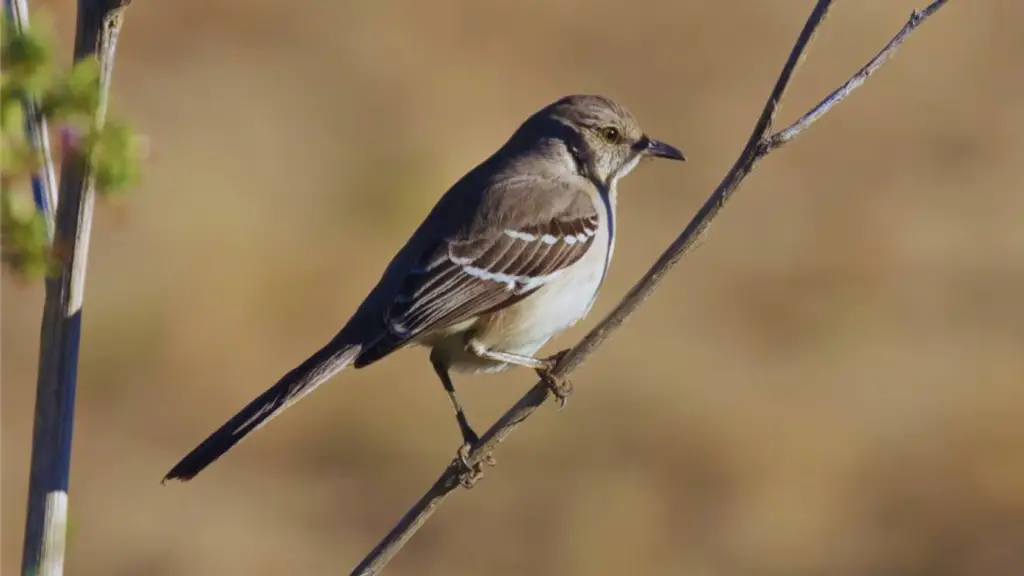
An exploration of the regional variations in mockingbird vocalizations reveals the crucial role these diverse sounds play in their communication with both other mockingbirds and the surrounding environment.
Mockingbirds are renowned for their ability to imitate the sounds of other birds, but their extensive repertoire serves a much deeper purpose than mere mimicry. These symphonies of melodies are a vital part of their communication toolkit.
Mockingbirds use their vocalizations to establish territory and attract mates. Each region has its own unique set of sounds, allowing mockingbirds to distinguish between individuals and recognize familiar neighbors. By communicating through their songs, mockingbirds establish boundaries and avoid unnecessary conflicts.
Furthermore, these songs serve as a form of advertisement for potential mates. Mockingbirds use their impressive vocal range to showcase their fitness and attract a mate. The complexity and diversity of their songs demonstrate their genetic superiority and ability to adapt to different environments.
Mockingbird sounds also play a crucial role in their interaction with the environment. By imitating the sounds of other birds and animals, they can deceive predators and protect their nests. They can also mimic sounds to attract insects and other prey, enhancing their foraging success.
In conclusion, mockingbird vocalizations are not merely a display of their mimicry skills. They serve as a means of communication, allowing mockingbirds to establish territory, attract mates, and interact with their environment. The regional variations in mockingbird sounds are a testament to their adaptability and the vital role these melodies play in their survival.
Human Interactions with Mockingbird Sounds
Interacting with mockingbird tunes can be like dancing to a melody, as humans are captivated by their captivating imitations and unique harmonies. These talented birds have the incredible ability to mimic the sounds of other birds, animals, and even human noises. It is no wonder that people find themselves drawn to these fascinating creatures and their impressive vocal skills.
Here are some ways in which humans interact with mockingbird sounds:
- Listening in awe as mockingbirds mimic a wide range of sounds, from the songs of other birds to the calls of squirrels and even car alarms.
- Trying to identify the different sounds that mockingbirds imitate, which can be a fun and challenging game for bird enthusiasts.
- Recording and sharing the melodic performances of mockingbirds to capture and preserve their unique vocal talents.
- Using mockingbird sounds as a form of relaxation and stress relief, as the soothing melodies can create a calming and peaceful atmosphere.
- Appreciating the beauty and complexity of mockingbird songs, which can serve as a reminder of the incredible diversity and creativity found in the natural world.
Interacting with mockingbird sounds allows us to appreciate the ingenuity of these remarkable birds and reminds us of the wonders of nature. So next time you hear a mockingbird’s enchanting melody, take a moment to join in the dance and appreciate the symphony of sounds they create.
Conservation of Mockingbird Species
To ensure the conservation of mockingbird species, it’s important to focus on two key points:
- Habitat preservation: By preserving their natural habitats, you provide a safe and suitable environment for these birds to thrive.
- Addressing threats to their populations: It’s crucial to identify and address the threats that are impacting mockingbird populations, such as habitat loss, climate change, and predation.
By taking these actions, you can contribute to the long-term survival of these remarkable birds.
Habitat Preservation
Preserving habitats is crucial in ensuring the harmonious symphony of mockingbird sounds continues to enchant and inspire us. These incredible birds thrive in diverse habitats, ranging from forests and grasslands to urban areas. By preserving their natural habitats, we can help maintain their population and ensure their melodic tunes fill our surroundings.
To preserve mockingbird habitats, consider the following:
- Plant native trees and shrubs: Creating a diverse and native plant landscape provides food and shelter for mockingbirds.
- Reduce pesticide use: Pesticides can harm mockingbirds and their food sources. Opt for natural alternatives to protect both the birds and the environment.
- Avoid excessive noise pollution: Mockingbirds are sensitive to noise. Minimize loud noises in their habitats to allow them to sing and communicate freely.
- Support conservation organizations: Donate or volunteer with organizations dedicated to preserving and restoring mockingbird habitats. Your efforts can make a significant impact on their survival.
Together, we can ensure that the melodious symphony of mockingbird sounds continues to grace our ears for generations to come.
Threats to Mockingbird Populations
The rapid urbanization and loss of natural habitats have led to a decline in mockingbird populations. In the past decade alone, there has been a shocking 30% decrease. As urban areas expand, mockingbirds are losing their natural nesting sites and foraging grounds. The destruction of forests and open spaces to make way for buildings and roads has left these birds with limited options for survival.
Additionally, pollution from urban areas poses a threat to their health. Pesticides and chemicals used in urban landscaping can poison the insects that mockingbirds rely on for food. Noise pollution from traffic and construction also disrupts their ability to communicate and mate.
Without immediate action to preserve their habitats and reduce urban impacts, the beautiful melodies of mockingbirds may become a thing of the past.
The Future of Mockingbird Research and Conservation
Imagine a world where the mesmerizing melodies of mockingbirds no longer fill the air, and their incredible mimicry is lost forever. It’s a chilling thought, isn’t it? But thankfully, there is hope for the future of mockingbird research and conservation.
- Increased Funding: With adequate funding, researchers can delve deeper into understanding the behavior, ecology, and migration patterns of these remarkable birds. This knowledge is crucial for developing effective conservation strategies.
- Community Involvement: Engaging local communities in conservation efforts can make a significant difference. By raising awareness about the importance of mockingbirds and their habitats, we can inspire people to take action and protect these incredible creatures.
- Collaborative Efforts: Mockingbird research and conservation can benefit from collaboration between scientists, conservation organizations, and government agencies. By pooling resources and expertise, we can achieve greater success in preserving mockingbird populations.
By envisioning a world without mockingbird melodies, we can tap into our emotions and recognize the urgent need to protect these birds and their habitats. So, let’s come together, support research, engage our communities, and collaborate for a future where the symphony of mockingbird sounds continues to enrich our lives.
FAQs About Mockingbird Sounds
How do mockingbirds learn to mimic other bird sounds?
Mockingbirds learn to mimic other bird sounds through observation and practice. They listen carefully, imitate the melodies, and refine their skills over time. As the saying goes, “Practice makes perfect,” and mockingbirds are the masters of mimicry.
Can mockingbirds mimic other sounds besides bird calls?
Yes, mockingbirds can mimic other sounds besides bird calls. They have been known to imitate sounds like sirens, car alarms, and even human voices. They are truly talented mimickers.
Do all mockingbirds have the same range of sounds?
Do all mockingbirds have the same range of sounds? No way! These little mimics are like the rock stars of the bird world, each with their own unique repertoire. Prepare to be amazed by their vocal talents!
Are there any other animals that mimic sounds like mockingbirds do?
Yes, there are other animals that mimic sounds like mockingbirds do. Parrots, lyrebirds, and some species of apes are known for their ability to imitate sounds.
How do mockingbirds use their mimicry in communication with other birds?
Mockingbirds use their mimicry to communicate with other birds by imitating their songs and calls. This helps them establish their territory, attract mates, and warn of potential threats. They are truly masters of imitation!
Conclusion
So there you have it, my friend! The symphony of melodies from the mimic master, the mockingbird, is truly a wonder to behold.
From its rich history to its incredible range of sounds, this bird never fails to amaze.
But it’s not just about the music – there’s science, culture, and even human interactions to consider.
As we strive to conserve these remarkable species, let us remember that the future of mockingbird research and conservation lies in our hands.
Together, we can ensure that this captivating bird continues to sing its sweet songs for generations to come, like a harmonious breeze through a summer meadow.

